
The Farnsworth
Invention: Fact -v- Fiction

 |
The Farnsworth
Invention: Fact -v- Fiction
|
 |
Act I, Scene 2: In which certain legends are given life |
| The Play |
The Facts
|
|
| After Farnsworth's disclosure to his science teacher, a more adult Farnsworth character assumes the role of narrator and walks through a scene in which the young Sarnoff's family is expelled from their shtetl (ghetto) near Minsk (in what is now Belarus) by Russian soldiers, who then proceed to burn down the Sarnoff family home. | David Sarnoff was born and spent his first years in such a ghetto, but his family emigrated voluntarily to the United States starting in 1900; While Sarnoff would later describe witnessing a cavalry attack on a crowd of demonstrators in Minsk, there is no evidence that any Cossacks ever burned his house down. | 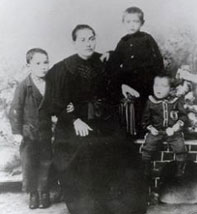 Sarnoff family, ca. 1900 |
| The young Sarnoff in America is portrayed as teaching himself English, getting a job as a telegraph operator, and getting fired for his refusal to work on Jewish holidays. | Other than completely fictional house-burning (unfortunate since that is one the play's thematic underpinnings..) the narrative depiction of David Sarnoff's formative years seems to essentially coincide with the facts -- though many of those facts were according to Sarnoff himself. | 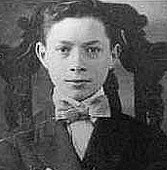 An adolescent David Sarnoff |
| Sarnoff is portrayed as the wireless hero of the Titanic sinking, tirelessly staying at his post relaying transmissions from rescue ships of the names of survivors. | To its credit, the play also describes how this story, too, is all part of the contrived Sarnoff legend. | 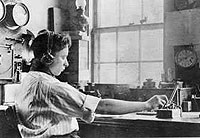 Hero of the Titanic or not, Sarnoff was a skilled telegrapher |
| After American Marconi's assets are spun of to form The Radio Corporation of America, Sarnoff is named Commercial Manager asked how he plans to use radio in the future. "Farm reports," he answers, adding under his breath, "and music." | Sarnoff famously (if dubiously) wrote a memo to his superiors proposing a "Radio Music Box". The memo first appeared in 1916, and again in 1920, and is said to be one of the essential milestones in the formation of the modern broadcasting industry. | 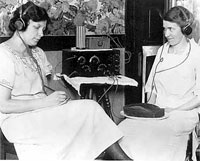 In the early 1920s, radio still needed crystals and headphone |
Want the whole story? Read a Book! |
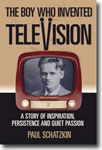 The Boy Who Invented Television A Story of Inspiration, Persistence, and Quiet Passion by Paul Schatzkin |
|